There is nothing more nerve-wracking for car owners than seeing a flashing check engine light. Is there something wrong with the car? Is it okay to ignore it? What are the reasons why the flashing check engine light then stops, and can I fix them?
The check engine light would usually flash when the Engine Control Unit (ECU) detects a problem with the engine. However, the light alone cannot diagnose whether the problem is mechanical or electrical.
Here are some of the more specific reasons why this happens:
- Damaged or Loose Gas Cap
- Malfunctioning Oxygen Sensor
- Problem with Catalytic Converter
- Misfiring Engine Cylinders
- An issue with Mass Air Flow Sensor
Read on to learn more about why there’s a flashing check engine light then stops. You will also know what you should do to fix the problem.
Flashing Engine Light Then Stops: Causes
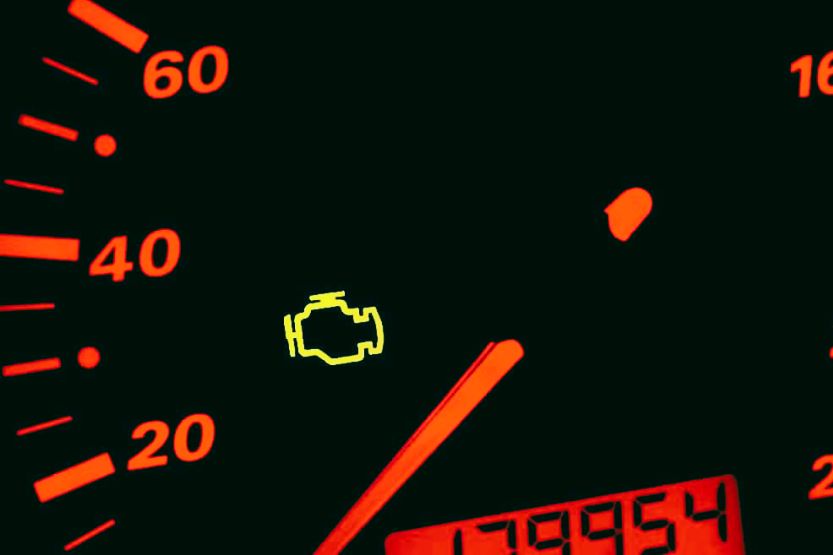
A flashing check engine light does not necessarily mean something is seriously wrong with your car’s engine. Sometimes, the light can flash for minor issues. However, this does not mean you should ignore this warning light when it turns on.
Here are some reasons why the check engine light would start flashing. Knowing these reasons provides peace of mind and prepares you for what could have gone wrong:
1. Damaged or Loose Gas Cap
Sometimes, the reason why your engine warning light turns on is not an engine issue. It can also light up when you forget to replace or tighten the gas cap after refueling. Few car owners know that car manufacturers designed gas caps to form a seal around the fuel filler opening.
This seal ensures that the fuel vapor does not escape and the fuel does not evaporate too fast. If it becomes loosens, it causes a loss of pressure inside the gas tank. It may also happen if the gasket on it gets broken. This is what the ECU senses and triggers the warning light.
If your check engine light suddenly turns on, and you recently went to a gas station, check the gas cap. Find out if it was correctly replaced. Check the rubber gasket to ensure the gas cap is on and properly tightened. Determine if it is still in excellent condition.
The gasket should still be flexible, not dry and cracked. If the gas cap is in bad condition, get a replacement from most auto supply stores.
2. Malfunctioning Oxygen Sensor
The oxygen sensor is a key component in the exhaust system. This sensor tracks how much oxygen remains in the engine exhaust fumes. You can find this component inside the exhaust pipe near the catalytic converter.
The ECU relies on this sensor’s data to determine the oxygen-to-fuel mixture needed in the cylinders. In case of an O2 sensor problem, the engine might run too lean.
This means there is not enough fuel in the mix. The engine may also be too rich, indicating the presence of too much fuel. This can cause the engine to misfire, increase engine emissions, and decrease fuel mileage.
There are several reasons why the O2 sensor might go faulty. These include electrical issues, dirt deposits on the sensor, and physical damage. If this is the issue, the check engine light can flash a few times and then not turn on again. This might mean the sensor is dirty.
3. Problem with Catalytic Converter
Like the O2 sensor, the catalytic converter forms part of the exhaust system. It is responsible for turning many harmful gases from engine emissions. After that, it turns them into harmless steam.
The thing about catalytic converter issues is that they make their problems worse. If the catalytic converter fails, it can mess up the ECU, causing the engine to run lean or rich. This will make the catalytic converter’s job harder, worsening the issues.
The catalytic converter may also fail because of a blockage in its exhaust ports. If you have an older vehicle, the blockage might be from carbon buildup from all those years of use.
If the catalytic converter gets totaled, you have no choice other than to have it replaced. The reason is that you will never be able to register your car at the DMV. Without a working catalytic converter, it is very unlikely that your car will pass an emission test.
4. Misfiring Engine Cylinders
Why do engines misfire? The usual reason is having faulty or dirty sparkplugs. Over time, sparkplugs can get caked with old engine oil and dirt deposits.
This can prevent the sparkplugs from properly and correctly firing. Sometimes, you can fix this simply by cleaning the sparkplugs. However, if they are already misfiring, you need to have them replaced.
Faulty ignition coils can also cause the engine to misfire. The ignition coil is the component that provides the sparkplug with electricity. If it fails, the cylinder will not fire at all. If this causes the check engine light (confirmed via the diagnostic tool), you will need to replace the ignition coils.
5. Issue with Mass Air Flow Sensor
The mass air flow sensor monitors how much air goes into the cylinders. This plays such a vital role in the proper operation of the engine. Once it malfunctions, expect the flashing of the check engine light.
There are several reasons why the mass air flow sensor would malfunction, including debris and dirt buildup. Also, the sensor might be on its last legs if you are driving an older automobile. It may be in serious need of replacement.
What to Do If the Check Engine Light Is Flashing?
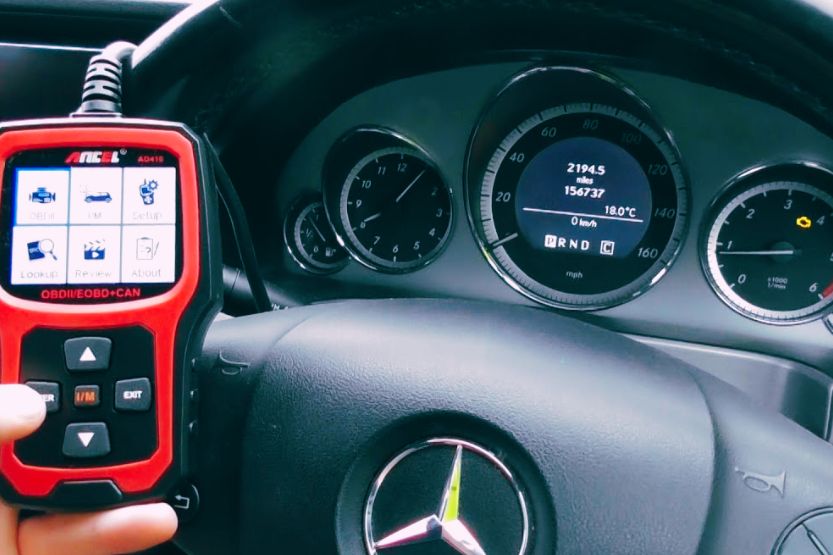
Identify the Problem
Upon seeing the dreaded check engine light flash in your instrumentation panel, you should find the root cause. This should be the first thing you should do – find the root cause of the warning.
Use a Diagnostic Tool
Note, though, that even the most experienced mechanic cannot pinpoint exactly what is causing the warning message. This is the reason why they would use a diagnostic tool. This electronic device plugs into your ECU. It then gives you an error code in case it detects anything wrong with your car.
Ironically, a separate tool is still necessary to diagnose problems, even with the many features of most modern cars. Fortunately, the diagnostic tool is inexpensive, so you should have no trouble buying one.
Some Diagnostic Tools Have a Bluetooth Feature
Also, it is not that difficult to use. Some of them even have Bluetooth connectivity. This means you can leave the tool connected. You can expect it to send the error codes directly to your phone.
Plug into your car’s OBD port to use the diagnostic tool. This is usually underneath the steering column. Plug the scanner into the port and open the app on your phone. The device will then send the error codes to your phone and the reason/s why the check engine light is on.
If the issues are minor, like dirty sparkplugs, you can fix them yourself without further damaging your car. What if the error codes state something seriously wrong with your vehicle? The best thing to do is to take your car to the nearest service center as soon as possible.
Again, what causes the flashing check engine light, which eventually stops? A misfire causes the check engine light to flash, then stop. This can damage the catalytic converter, so it is better to resolve this quickly.
What to Do When the Check Engine Light Comes On
Does the Check Engine Light Mean Your Car Needs Fixing?
The check engine light might be terrifying to see. Does it always mean you must prepare your wallet for impending damages? The truth is that the check engine light only provides an idea of the damage. Sometimes, it can be precise, but sometimes it is vague.
Should you only take your car to the mechanic when the check engine light flashes when accelerating? Of course not. Don’t wait until the check engine light comes on for you to go to the mechanic. Nothing beats the skill of a professional mechanic and proper routine maintenance.
Two-step Automotive Maintenance
The ECU will not warn you if your water pump is about to malfunction. There will be no warning if the CV joint is about to break. Think of automotive maintenance as a two-step process.
The first and most crucial step involves routine preventative maintenance checkups. Have these checkups on a strict schedule, not when you think something is wrong with your car.
The second step is taking your car to the mechanic anytime you sense something wrong. For instance, visit a mechanic when you hear unusual noises in it. Do the same if you feel something weird when driving the car.
Familiarize Yourself with Your Car’s Basic Needs
Familiarize yourself with the basic needs of your car, too. For instance, know the frequency of changing the engine oil, topping up the coolant, and changing brake pads. Conduct research about your car, the basic maintenance needs, and this model’s most common issues.
Be consistent with its maintenance and upkeep. That way, you will not have to see the check engine light turn on.
Can You Still Drive Your Car with the Check Engine Light On?
Technically, you can still drive your car even when the check engine light flashes. An example is when the check engine light flashing then stops when accelerating.
It will depend on what the problem is. What if the check engine light comes on while you are driving, and you do not notice anything strange? In that case, driving your car should probably be safe until the nearest mechanic’s garage.
However, you should still be wary of the flashing light, even without noticing anything wrong with your car. If you notice an intermittent flashing check engine light, it should be reason enough for a trip to the mechanic.
Chevy Check Engine Light Flashing Then Stops
Does the check engine light in your Chevy (cars and trucks) starts to flash on and off slowly? Then the problem might not be that serious. When the light is flashing slowly, you can still drive the vehicle for a couple of miles without any problem.
However, since the check engine light is on, something requires your attention, although not immediately. However, you should still schedule a consult with your mechanic to get to the bottom of the problem.
Some of the reasons why Chevy’s check engine light would flash slowly include the following:
- Faulty engine sensors (probably just dirty)
- Slightly misfiring cylinders
- Faulty catalytic converter (again, probably dirty)
- Faulty fuel injectors
Meanwhile, a check engine light that flashes rapidly means that the issue needs immediate attention. If this happens when driving, pull over to the shoulder and have your car towed to the nearest mechanic.
Ford Check Engine Light Flashing Then Stops
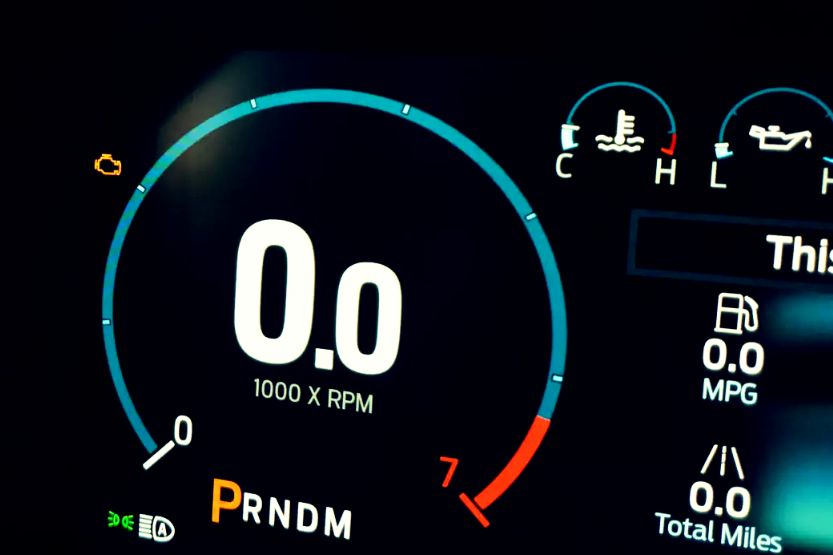
When the check engine light in your Ford suddenly starts flashing and then stops, it means the ignition is turned on. This happens when you put the key in the ignition and the position is still in the ACC position. When you start the engine, the light would automatically turn off.
What if the warning light does not turn off when the engine is already running? Then it might be a sign that there is something else wrong with the car, like:
- Timing belt issues
- Emissions error
- Mass airflow sensor error and others
The ECU may have produced a diagnostic error code if the light flashes three times and turns off. Take your car to the mechanic to check it and determine what is wrong with it.
Ford F150 Check Engine Light Flashing Then Stops
If you are driving a Ford F150 and see an intermittent flashing check engine light, the engine may be misfiring. This means you can only drive your vehicle for a mile or two more before severe engine damage sets in. In this case, you must head to the nearest mechanic as soon as possible.
Ignoring this warning signal can result in serious engine troubles, leading to engine knock. When this happens, you will need to spend thousands of dollars on repairs.
Frequently Asked Questions (FAQs)
Does a Flashing Check Engine Light Mean a Serious Problem?
Consider a flashing or steady check engine warning light as a sign of a severe car issue. Do this consistently, even if you do not feel anything is wrong with your car. Note that it would still be in your best interest to have it checked out by a professional mechanic.
How Many Miles Can You Drive with The Check Engine Light On?
Ideally, you should never drive your car when the check engine light is lit. Some people say driving is fine even with this warning light on.
They say that it is okay if you do not notice anything different. However, the problem might not be anything mechanical. It could be an electrical component malfunction or an issue with the exhaust system.
The undiagnosed problem will worsen if you ignore the check engine light and continue driving. Spend just a little bit to confirm the presence of a problem. Otherwise, you will end up facing a huge bill for severe repairs.
What’s The Most Common Reason for A Flashing Check Engine Light?
A faulty oxygen sensor is probably the biggest reason your car’s check engine light would suddenly start flashing. The ECU could not collect data from the mass airflow sensor.
This does not necessarily mean you need to find a replacement for the sensor. It might just be caked with dirt and grime, so it cannot get an accurate reading.
Can the Check Engine Light Turn On For No Reason?
There is always a reason why the check engine light turns on. However, this does not mean that the reason is serious and requires extensive repairs. Sometimes, no repairs are needed, like when you did not put the gas cap back properly.
In Closing – Flashing Check Engine Light Then Stops
The check engine light usually flashes when the car’s ECU detects a problem with the engine. However, a flashing check engine light is not enough to diagnose the root problem. You will need the help of a professional mechanic for that.
Here are some of the common reasons why this happens:
- Damaged or Loose Gas Cap
- Malfunctioning Oxygen Sensor
- Problem with Catalytic Converter
- Misfiring Engine Cylinders
- An issue with Mass Air Flow Sensor
You need to know one thing about a flashing check engine light. It happens for a reason, and it is bad to ignore it and continue driving. Gear on the safe side by detecting the problem and having it fixed as soon as possible.

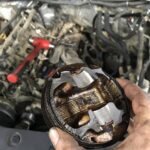
![White Smoke On Startup Then Disappears [Causes and Solutions] White smoke On Startup Then Disappears](https://roadsumo.com/wp-content/uploads/2021/11/white-smoke-on-startup-then-disappears-150x150.jpg)
![Oil Light Flashing [Causes and How to Fix] oil light flashing](https://roadsumo.com/wp-content/uploads/2022/04/oil-light-flashing-150x150.jpg)

![Check Engine Light On and Off Intermittently [Causes and Fixes] check engine light on and off](https://roadsumo.com/wp-content/uploads/2021/06/check-engine-light-on-and-off-150x150.jpg)
![Check Engine Light on After Oil Change [Causes and Solutions] Check Engine Light on After Oil Change](https://roadsumo.com/wp-content/uploads/2021/10/check-engine-light-on-after-oil-change-150x150.jpg)
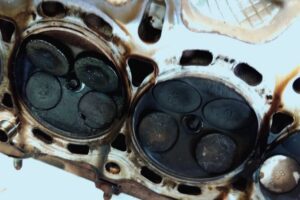
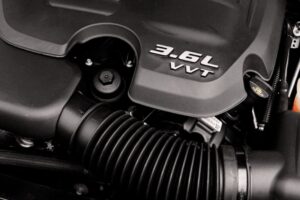
![Read more about the article 2003 Duramax Specs, Problems [LB7 Full Review]](https://roadsumo.com/wp-content/uploads/2022/06/2003-Duramax-300x200.jpg)